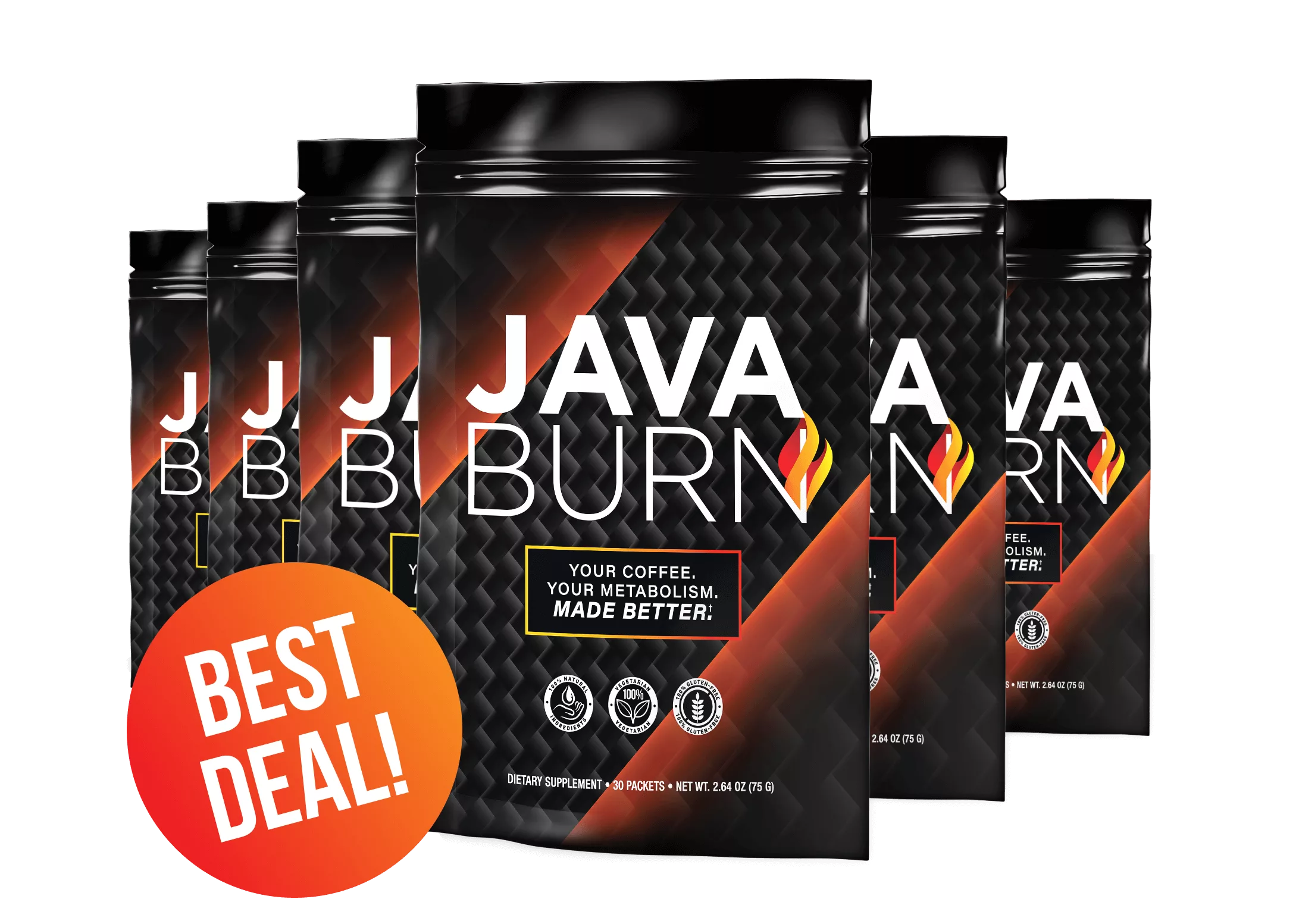Maintaining a healthy weight can often involve incorporating low-calorie alternatives into one’s diet, and for coffee enthusiasts, there’s a delightful opportunity to blend the love of coffee with the pursuit of weight loss. Low-calorie coffee smoothies are emerging as a popular choice for individuals looking to reduce their caloric intake without sacrificing their daily coffee ritual.
These smoothies offer a nutritious way to kickstart the morning or provide a mid-afternoon boost, typically using ingredients that support a weight management plan.

These coffee-infused smoothies blend the rich, aromatic experience of coffee with a variety of mix-ins such as frozen fruit, nut butters, and protein powders to create a satisfying and health-conscious beverage.
By selecting the right combinations of ingredients, these smoothies can become a tool in one’s weight loss arsenal, offering the dual benefits of energy and satiety. This sort of nutritious concoction can be tailored to personal taste preferences while keeping calories in check, making it easier for individuals to adhere to their dietary goals.
Moreover, the versatility of these smoothies is evident in the endless possibilities for customization, allowing for dietary restrictions and preferences to be accommodated. From using low-calorie milks like almond or coconut milk to adding boosters like collagen peptides or cacao powder, coffee smoothies can be an essential part of a healthful diet that doesn’t compromise on flavor or enjoyment.
The convenience of these smoothies also aids in sticking to a healthy eating plan, providing a quick and easy meal option that aligns with busy lifestyles and weight loss objectives.
Understanding Low-Calorie Smoothies

Low-calorie smoothies can be strategic nutritional choices for individuals targeting weight loss while maintaining a healthy diet. They provide essential nutrients without excessive calorie intake.
The Role of Calories in Weight Loss
Calories are the unit of energy that the body uses for all activities, including maintaining vital functions while at rest. A fundamental principle of weight loss is creating a calorie deficit, where the body consumes fewer calories than it burns. Low-calorie smoothies support this goal as they can be crafted to offer nourishment and taste satisfaction, yet remain low in calories.
Benefits of High-Fiber and High-Protein Ingredients
Low-calorie smoothies with high-fiber and high-protein ingredients offer several advantages. Fiber is crucial for digestive health and provides a feeling of fullness, which can help decrease overall calorie intake. Smoothies rich in fiber but with no added sugar act as a tool for weight control. Protein, on the other hand, is essential for preserving muscle mass during weight loss and also aids in satiety. A smoothie that combines both can be a potent ally in a weight loss regimen, as it can help manage hunger and support a healthy metabolism.
Coffee’s Contribution to Health and Weight Loss

Coffee is not just a morning ritual; its ingredients can contribute to health and potentially aid in weight loss. The beverage is rich in biologically active substances that may impact metabolism and provide other health benefits.
Antioxidants in Coffee
Coffee is laden with antioxidants, which can protect the body from oxidative stress by neutralizing free radicals. These compounds are integral for overall health and may also support weight loss indirectly by improving overall well-being.
Caffeine and Metabolism Boosting
The caffeine found in coffee is well-known for its ability to enhance alertness and energy levels. It can boost the metabolic rate, leading to increased fat burning, as substantiated by recent studies. It’s important to moderate intake as excessive caffeine may have undesired effects.
Crafting the Perfect Low-Calorie Coffee Smoothie

Creating a delicious and nutritious low-calorie coffee smoothie involves careful selection of ingredients and preparation techniques designed to maximize flavor without compromising on health goals. The following guide lays out the steps to tailor a smoothie that aligns with weight loss efforts, brings out rich taste, and satisfies those creamy cravings in a healthful way.
Choosing the Right Ingredients
The foundation of a good coffee smoothie starts with coffee. Opt for a strong brewed coffee that’s been cooled; this provides the distinct coffee flavor without unnecessary additives. Incorporating protein powder can boost the nutritional profile and keep one satiated. Choose an unsweetened, high-quality protein powder that complements the coffee flavor. For the liquid base, almond milk is an excellent choice due to its low calorie content and subtle nutty taste.
Ingredients to use:
- Strong brewed coffee (chilled)
- Unsweetened protein powder
- Almond milk (unsweetened)
Sweetness Without the Sugar
A common challenge is achieving the right level of sweetness in a low-calorie coffee smoothie without resorting to sugar. Natural sweeteners like a frozen banana can dramatically enhance the taste without piling on the calories. For additional depth, a dash of cinnamon or vanilla extract can add layers of flavor. These ingredients provide a natural sweetness and complexity to the smoothie, ensuring it’s both tasty and waistline-friendly.
Natural sweeteners:
- Frozen banana
- Cinnamon
- Vanilla extract
Making It Creamy and Satisfying
The key to a creamy texture without the added fat and calories lies in the careful selection of ingredients. Frozen bananas not only sweeten but also give the smoothie a rich, smooth consistency. For chocolate lovers, a sprinkle of unsweetened cocoa powder can add both creaminess and a chocolatey hint without excess calories. If a creamier texture is desired, avocado can also be used in moderation, providing healthy fats and a silky mouthfeel.
Ingredients for creaminess:
- Frozen banana
- Unsweetened cocoa powder
- Avocado (optional, use sparingly for added creaminess)
Innovative Recipes and Variations

Low-calorie coffee smoothies are a versatile option for weight loss, offering both classic flavors and inventive twists. With careful ingredient choices, these smoothies can be nutritious, satisfying, and energizing without packing in extra calories.
Classic Coffee Smoothie Recipes
For a timeless treat, one can blend a frozen banana with chilled brewed coffee and a sweetener like honey or stevia. Adding chia seeds or oats can increase the fiber content, making the smoothie even more filling. To create a creamy texture without excess calories, low-fat milk or a plant-based alternative can be used in place of whole milk.
- Ingredients:
- Coffee (chilled)
- Banana (frozen)
- Chia seeds or oats
- Sweetener (honey, stevia, etc.)
- Milk (dairy or plant-based)
Tropical Twists on Coffee Smoothies
To add a tropical flair, blend coffee with pineapple chunks and coconut milk or almond milk for a refreshing and exotic taste. A small scoop of plant-based protein powder can turn this coffee smoothie into a power-packed breakfast or post-workout refreshment.
- Ingredients:
- Coffee (chilled)
- Pineapple chunks
- Coconut milk or almond milk
- Protein powder (optional for a protein boost)
Green Coffee Smoothie Variations
Green coffee smoothies incorporate spinach or kale for a nutrient-rich start to the day. A carefully balanced recipe using mild greens can enhance the health benefits without overwhelming the coffee’s robust flavor.
- Ingredients:
- Coffee (chilled)
- Spinach or kale
- Banana (to sweeten naturally)
- Creamy element (Greek yogurt or avocado)
These variations can be tailored to individual taste preferences and dietary needs while maintaining a low-calorie count beneficial for weight loss and overall health.
Nutritional Information and Health Benefits

When crafting low-calorie coffee smoothies for weight loss, it’s essential to consider the nutritional value they deliver. These smoothies can be a healthy addition to one’s diet, providing essential macronutrients and micronutrients while aiding in weight management.
Macronutrients and Micronutrients Breakdown
- Calories: A smoothie’s caloric content is a pivotal factor for weight loss. Ingredients like bananas contribute roughly 89 calories per 100 grams. Incorporating low-calorie additives such as dark chocolate with no sugar can offer flavor without excessive caloric intake.
- Protein: Essential for muscle repair and satiety, protein in smoothies can be boosted with ingredients like Greek yogurt, offering about 10 grams of protein per 100 grams.
- Fiber: Integral for digestive health, fiber is found in fruits like bananas, providing about 2.6 grams per 100 grams.
- Healthy Fats: Avocado or nuts can add omega-3 fatty acids and healthy fats without significantly increasing the calorie count.
- Vitamins and Minerals: Adding fruits rich in vitamin C enhances immune function, while ingredients like spinach provide calcium and potassium, which are essential for bone health and blood pressure regulation.
- Antioxidants: Coffee and dark chocolate are excellent sources of antioxidants, which help combat oxidative stress.
Understanding Fats, Carbs, and Proteins
- Fats: Not all fats are created equal. Smoothies can be a good source of healthy fats from ingredients like coconut cream, which should be used in moderation due to its high caloric content. Healthy fats contribute to satiety and proper cell function.
- Carbohydrates: Carbs provide energy; choosing sources with a low glycemic index, such as fresh ground coconut, can help maintain steady blood sugar levels. The carbohydrate content in a smoothie can affect its overall calorie count.
- Proteins: Including a source of protein in a coffee smoothie can aid in weight loss by increasing feelings of fullness and preventing muscle loss, particularly if consumed after exercise.
Lifestyle and Diet Tips

Incorporating low-calorie coffee smoothies into one’s diet can be particularly effective for weight loss when coupled with healthy lifestyle choices. This section offers detailed advice on smoothly integrating these nutritious shakes into daily routines and the best times to consume them for maximum benefits.
Integrating Smoothies into Your Diet
Introducing low-calorie coffee smoothies into one’s diet should be done thoughtfully to ensure they contribute to a balanced intake of nutrients. One can start by replacing a single meal—preferably breakfast—with a coffee smoothie. Breakfast smoothies rich in fiber can provide a satiating and energizing start to the day without excess calories. Ingredients like oats or chia seeds can enhance the fiber content, benefiting digestion and overall health.
When to Enjoy Your Smoothie for Optimal Benefits
Timing is key when consuming smoothies for weight loss. A coffee smoothie can serve as an excellent morning shake, kick-starting metabolism and providing essential nutrients after an overnight fast. Alternatively, one might opt for a coffee smoothie post-workout when the body needs replenishment. It’s crucial, however, to avoid late-night consumption as this can disrupt sleep, especially due to the caffeine content in coffee.
Post-Workout Considerations

After a workout, choosing the right beverage and nutrients is crucial for muscle recovery and replenishing energy. A coffee smoothie can be both refreshing and beneficial if designed with post-exercise nutrition in mind.
Protein and Muscle Recovery
Protein is essential for repairing and building muscle tissue. For effective muscle recovery post-workout, individuals should consume around 0.14-0.23 grams of protein per pound of body weight. Integrating protein into a low-calorie coffee smoothie can transform it into a powerful recovery aid that supports muscle mass and aids in overall recovery.
| Body Weight (lbs) | Protein Needed (grams) |
|---|---|
| 150 | 21 – 34.5 |
| 200 | 28 – 46 |
| 250 | 35 – 57.5 |
Coffee as a Post-Exercise Beverage
Coffee, due to its caffeine content, can serve as an energy booster post-workout. It can help to restore depleted glycogen levels more rapidly when consumed with carbohydrates. A coffee breakfast smoothie might include a balance of complex carbohydrates and healthy fats for sustained energy, improving recovery times and helping to prepare the body for the next workout session.
Sustainable Shopping and Preparation

When crafting low-calorie coffee smoothies as part of a weight loss plan, it’s critical for the shopper to focus on the acquisition of eco-friendly and fresh ingredients while considering efficient preparation techniques for maintaining freshness and convenience.
Selecting Eco-Friendly Ingredients
Organic ingredients ensure that the coffee smoothies are not only healthier but also kinder to the environment. Shoppers should seek out organic coffee and add-ins like raw almonds or soy milk for those opting for a vegan variant. Utilizing fresh ingredients that are in season also supports local farming and reduces the carbon footprint. When selecting dairy milk, one should consider dairy alternatives like almond or oat milk, which often have a lower environmental impact.
- Organic Coffee: Purchased from certified organic farmers.
- Vegan Milk Options: Soy, almond, oat, and other plant-based milk.
- Fresh, Raw Produce: Organic fruits and vegetables when available.
Preparation Tips for Freshness and Convenience
To ensure the smoothies retain maximum freshness, using ingredients promptly after purchase is essential. For convenience, one can prepare individual smoothie bags with pre-portioned ingredients, excluding liquids, for a quick and easy blend. Freezing ripe fruits like bananas can maintain both their freshness and their nutrient content, ready for use in a smoothie at any time.
- Individual Smoothie Bags: Prep and freeze fruits; measure dry ingredients.
- Freshness: Use fruits and vegetables within a short timeframe.
- Eco-friendly Storage: Use reusable silicone bags or containers.
By concentrating on sustainable shopping and mindful preparation, individuals can create environmentally friendly, nutritious smoothies that align with their weight loss goals.
Conclusion

Incorporating low-calorie coffee smoothies into one’s diet can be a proactive strategy in pursuing weight loss goals. These smoothie blends, typically prepared with ingredients like ice, protein powder, and a banana, provide a satisfying combination of taste and nutritional value. The caffeine content in coffee offers a metabolic boost, while a careful selection of add-ins contributes to a lower calorie count.
The benefits of these smoothies are multi-faceted. They serve not only as a tool for weight control but also deliver vitamins and minerals essential for overall health. For individuals seeking weight management options, these smoothies can replace higher-calorie meals, effectively reducing daily calorie intake.
However, it is crucial to maintain balanced dietary habits, ensuring that one’s nutritional needs are fully met. It’s advisable to integrate a variety of fruits, vegetables, and protein sources, considering portion control to avoid calorie surplus.
It’s evident that low-calorie coffee smoothies are a commendable addition for those looking to enhance their weight loss journey while enjoying a delicious and refreshing beverage. Yet, these should be part of a comprehensive approach to wellness, including regular physical activity and mindful eating. They are not standalone solutions but can contribute positively to a structured and informed weight loss plan.
Frequently Asked Questions

When it comes to crafting low-calorie coffee smoothies for weight loss, one often has questions about ingredients, recipes, and substitutions to meet dietary preferences and goals. This section addresses those inquiries with clear and practical advice.
What are some easy recipes for low-calorie coffee smoothies?
For an effortless low-calorie coffee smoothie, one can simply blend frozen coffee cubes with almond milk and a touch of vanilla extract. Sweeten with stevia for a zero-calorie option.
How can I make a healthy coffee smoothie without using bananas?
One can make a healthy coffee smoothie without bananas by using avocado for creaminess and dates for natural sweetness. This combination maintains the thick texture and sweet taste without the banana flavor.
What are the best ingredients to include in a coffee smoothie with yogurt for weight loss?
In a weight loss coffee smoothie with yogurt, it is best to include ingredients like Greek yogurt for protein, chia seeds for fiber, and espresso for metabolism-boosting caffeine. Opt for plain, nonfat Greek yogurt to keep calories in check.
Can you suggest an iced coffee protein shake recipe that supports weight loss goals?
An iced coffee protein shake can contribute to weight loss by blending a scoop of your preferred protein powder, iced brewed coffee, a handful of ice, and a dash of cinnamon. Cinnamon can aid in regulating blood sugar levels.
What can I substitute in a coffee smoothie recipe if I wish to exclude protein powder?
For those avoiding protein powder, silken tofu or a spoonful of almond butter are excellent substitutions. They provide the necessary protein and a rich texture to the smoothie.
What type of liquid is best to use in weight loss smoothies to enhance their benefits?
Using liquids like unsweetened almond milk, coconut water, or even cold green tea can enhance the weight loss benefits of smoothies. These options add minimal calories while providing a flavorful base.
